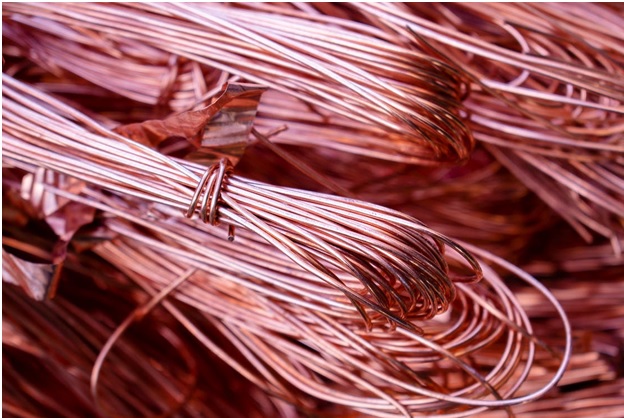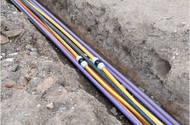Which Type (Material) of Battery Cable Wire Makes the Best Conductor?
17th Feb 2022
We use electricity to do much more than heat our homes and offices. Electricity powers our world, from entertainment to lighting to communications and much more.
But most of us live far away from where power is generated. That’s where the basic functionality of a simple piece of electrical equipment known as a conductor comes into play. Battery cable and wire are made of conductors, as are all other types of electrical cable and wire.
These conductors, in order to be useful, must “conduct” a flow of electrons. Let’s break this all down, bit by bit.
What Makes a Good Conductor
Fun fact: there are actually three main types of conductors, being thermal conductors, acoustic conductors, and the focus of this piece, electrical conductors.
In the case of electrical conductors, there are three variables you need to be aware of to understand what makes a good conductor: these are current, resistance, and voltage. The most important one is resistance, and it should not surprise you to learn that they are all interrelated.
Current is a measure of the flow of electricity, and resistance is the measurement of how much a material “pushes back” against the current. Multiplying these two quantities together gives you electrical potential, also known as voltage. Voltage is the “force” of electrical energy, or how much it wants to “push” through a conductor.
The higher the resistance, the worse a conductor is. Conductors with high resistance heat up, melt, or leak electrical energy through some form of discharge, most often something known as a corona discharge, in which the air experiences electrical breakdown and electrical potential “escapes.”
The lower the resistance, the more easily electrons can flow through a material without heating up or losing potential.
Materials with low resistance tend to be metals because they have what is known as “free electrons,” meaning that electrons can move about easily in the material.
Now, to be clear, they are not quite “free” electrons. They are still bound to atoms that make up the metals that constitute them. It’s just that it’s easier to release them from the electron shells that contain them.
So, when you direct a flow of electrons through materials like these (being good conductors) there’s little resistance. In other words, the metals don’t “want” the electrons, allowing them to continue on their way.

Top Conductor Materials in Battery Cable Wire
There are many different materials that are used as electrical conductors, most commonly being the following four precious and semi-precious metals.
●Silver: Silver is the best electrical conductor among all of the elements. However, it is very rarely used as a conductor, the reason being that it is far too reactive to serve in such a role. Despite the fact that silver offers very little resistance to an electrical current, the outside tarnishes quickly, giving rise to something known as the “skin effect,” which creates an uneven flow of electricity. Also, another reason silver is rarely used is that it is cost-prohibitive to use it. (Note: marine grade wire and cables, which are used in marine environments, are not silver; they are tinned copper conductors. The tin is used to protect the cables from corrosion).
●Copper: Copper is by far the most commonly used electrical conductor in industrial, commercial, and residential settings. It offers similar conductivity to silver, and it is less reactive (though it is still reactive.) Copper is heavy, but it is also malleable and ductile, and much more affordable than silver. Many electrical conductors are annealed pure copper conductors, which are soft, ductile, and highly conductive. (A conductor can also be made from copper strands, in which case it will be known as a cable instead of a wire. Improving strand count improves cable flexibility.)
●Gold: Gold is another exceptional conductor, and it has two big advantages over copper and silver: it’s nonreactive so it doesn’t tarnish. However, as you can imagine, using gold as a conductor is extremely cost-prohibitive, so it’s only used in very niche applications.

●Aluminum: While aluminum is not as good a conductor as copper, silver, or gold, it has a few advantages over each of them. It is far lighter, much softer, and easier to bend, stretch and form. Moreover, it is considerably more affordable. For this reason, aluminum is still widely used in wiring applications.
In addition to these top elemental metal conductors, many other materials exhibit high conductivity, including calcium, magnesium, sodium, iridium, and many other elements. However, these are not used as electrical conductors because they are unstable, rare, expensive, impractical to use, or some combination of these and other traits.
(How an Insulator Works)
Just a note here, since it’s worth mentioning the difference between a good conductor and a good insulator. You have seen that a good conductor allows a free flow of electrons through it.
Good insulators are the opposite not only do they not “want” to accept a flow of electrons, but the atoms that make them up cling to their electrons tightly. Therefore, pushing a current through them requires a lot of force - they are highly resistant to the flow of electrons.
There are many materials that have very high resistance to electricity, such as glass and dry air. Styrofoam, wood, and many plastics are also excellent insulators.
However, where you’ve probably encountered a good insulator is in the form of rubber or plastic. These resist the flow of electricity, insulate the cable or wire within, and provide some measure of shielding against EMI, or electromagnetic interference. This is why so many electrical and battery cables and wires are made with plastic or rubber insulating jackets.
Does Anything Else Besides Conductor Material Influence Conductivity?
Yes, there are a variety of factors that influence the ability of a conductor to carry a current at a given voltage in addition to material.
Temperature, impurities in the material matrix, interfering electromagnetic fields, and even the crystal structure of the material will influence how well it can conduct a current.
Size also affects voltage rating and ampacity. Conductors are available in different wire gauge sizes, such as AWG gauge (American Wire Gauge); the thicker a given conductor is, the better it will be able to carry a current.
For example, the longer the battery cable or wire, the greater the overall resistance. This doesn’t actually affect the material’s conductivity, but it does influence the decision-making in terms of whether or not a given conductor will be suitable for a specific application.
Want to Learn More?
Interested in what makes high-quality battery cable and wire what it is? Get in touch with us at Sales@EWCSWire or by phone at 800-262-1598 if you have any questions about any of our products.

